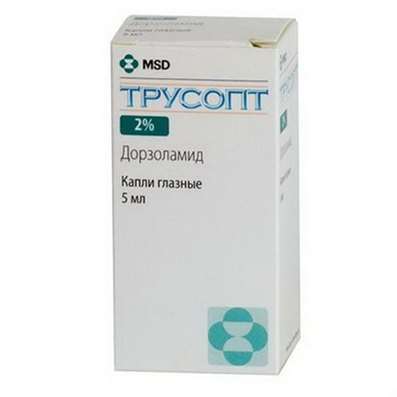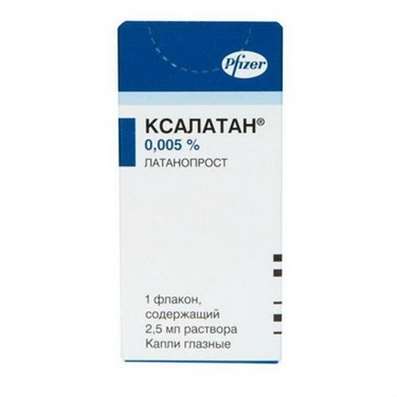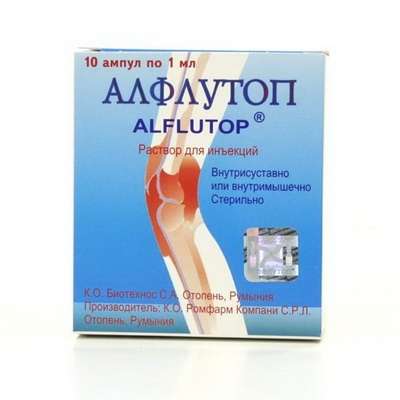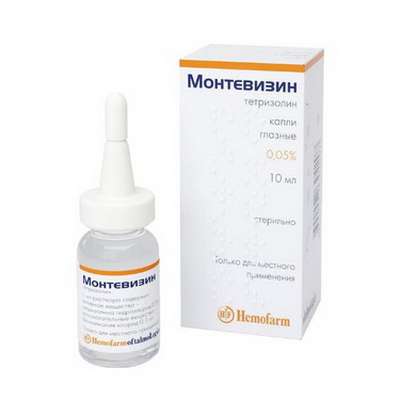Instruction for use: Efferalgan
I want this, give me price
Active substance Paracetamol
└ĎŇ N02BE01 Paracetamol
Pharmacological group
Anilides
Nosological classification (ICD-10)
G43 Migraine
The pain of migraine, Migraine, hemiplegic migraine, Migraine headache, A migraine attack, Continuous headache, hemicranias
J06 Acute upper respiratory infections of multiple and unspecified
Frequent colds viral diseases, Infections of the upper respiratory tract, Acute respiratory disease influenza character, for colds Pain, Acute colds,Cold, respiratory infection,Seasonal colds, Pain in infectious and inflammatory diseases of the upper respiratory tract, Bacterial infections of the upper respiratory tract, Bacterial respiratory infections, Viral disease of the respiratory tract, Viral respiratory tract infections, Inflammatory disease of the upper respiratory tract, Inflammation of the upper respiratory tract disease, Inflammation of the upper respiratory tract illness with difficult sputum, Inflammatory airway disease, Secondary infections with colds, Shortness of sputum in acute and chronic respiratory diseases, Upper respiratory tract infection, Infections of the upper respiratory tract, Respiratory Tract Infections, Infections of the respiratory tract and lungs, Infectious-inflammatory diseases of the upper respiratory tract, Infectious-inflammatory diseases of the upper respiratory tract and ENT-organs, Infectious-inflammatory diseases of the upper respiratory tract in children and adults, Infectious-inflammatory diseases of the upper respiratory tract, Infectious inflammation of the airways,respiratory infection, Qatar upper respiratory tract, Catarrh of the upper respiratory tract, Catarrhal disease of the upper respiratory tract, Catarrhal symptoms of the upper respiratory tract, Coughing with a cold, SARS, ARI, ARI with rhinitis phenomena, Acute respiratory infection, Acute infectious and inflammatory disease of the upper respiratory tract, Acute respiratory disease, Sore throat or nose, Respiratory viral infections, Respiratory diseases, Respiratory infections, Recurrent respiratory infections, Secondary infection with influenza, cold in the chest, Feverish condition with flu usitis, acute sinusitis, genyantritis, purulent sinusitis
K08.8.0 * Painful toothache
Dentinal pain, Dentinal pains, Pain pulpitis, Anesthesia in dentistry, Pain syndromes in dental practice, Pain after removal of tartar, Pain when extracting a tooth, Toothache, Pain after dental interventions
M54.1 Radiculopathy
Acute sciatica, Radiculopathy, Radiculitis, Radiculitis with radicular syndrome, Acute radiculopathy, Pain syndrome with radiculitis, Subacute radiculitis, Radiculitis, Chronic radiculitis, Diseases of the spinal column
M54.5 Pain below the back
Pain in the lower back, Lumbar pain, Lumbalia, Painful conditions of the spinal column, Back pain, Lower Back Pain Syndrome
M79.1 Myalgia
Myofascial pain syndromes ,Pain syndrome in musculo-articular diseases, Pain syndrome in chronic inflammatory diseases of the musculoskeletal system, Pain in the muscles, Tenderness of muscles, Muscular soreness in severe physical exertion, Painful conditions of the musculoskeletal system, Pain in the musculoskeletal system, Pain in the muscles, Pain at rest, Muscle aches, Muscle pain, Musculoskeletal pain, Myalgia, Muscle pain, Muscle pain at rest, Muscle pain, Muscular pain of non-rheumatic origin, Muscle pain of rheumatic origin, Acute muscle pain, Rheumatic pain, Rheumatic pains, Myofascial syndrome, Fibromyalgia
M79.2 Neurology and neuritis, unspecified
Pain syndrome with neuralgia, Brachialgia, Occipital and intercostal neuralgia, Neuralgia, Neuralgic pain, Neuralgia, Neuralgia of intercostal nerves,Neuralgia of the posterior tibial nerve, Neuritis, Neuritis traumatic, Neuritis, Neurological Pain Syndromes, Neurological contractures with spasms, Acute neuritis, Peripheral neuritis,Post-traumatic neuralgia,Severe pain of a neurogenic nature, Chronic neuritis, Essential neuralgia
N94.6 Dysmenorrhea Unspecified
Pain during menstruation, Functional disorders of the menstrual cycle, Menstrual cramps, Emmeniopathy, Pain during menstruation, Painful menstrual irregularities, algomenorrhea, algomenoreya, Pain smooth muscle spasm, Pain spasm of smooth muscles (renal and biliary colic, intestinal spasms, dysmenorrhea), Pain spasm of smooth muscles of internal organs (kidney and biliary colic, intestinal spasms, dysmenorrhea), Disalgomenoreya, dysmenorrhea, Dysmenorrhea (essential) (Exfoliative), menstrual disorder, menstruation painful, metrorrhagia, Violation of the menstrual cycle, Menstrual irregularities, Prolaktinzavisimoe menstrual disorders, Prolaktinzavisimoe menstrual dysfunction, Pain spasm of smooth muscles of internal organs, Spasmodic dysmenorrhea, Primary disalgomenoreya
R07.0 Sore throat
A sharp pain in the throat, Sore throat
R51 Headache
Pain in the head, Cephalgia, Pain with sinusitis, Pain in the back of the head, Painful headache, Headache of vasomotor genesis, Headache of vasomotor origin, Headache with vasomotor disorders, Headache, Neurological headache, Serial headache
R50.0 Fever with chills
High fever, Heat, Chills, elevated temperature, hyperthermia, Prolonged fever, Feverish syndrome, Fervescence, Increased body temperature in infectious and inflammatory diseases, fever Symptoms, febrile syndrome, Febrile state, Fever, Fever in infectious and inflammatory diseases, Fever with SARS, Fever with cold, Fever for colds, febrility, Feverish condition with flu, Feverish state in infectious and inflammatory diseases , Feverish state of infectious diseases and in the postoperative period, Feverish condition for colds, Febrile of different genesis, Feverish syndrome on the background of infectious diseases, Feverish syndrome in infectious and inflammatory diseases, Feverish syndrome with colds, Feverish syndrome of different genesis, Increased temperature for colds, Increased temperature at catarrhal and infectious and inflammatory diseases, Increased body temperature in cold, etc., Increased body temperature in cold and other infectious and inflammatory diseases, Increased body temperature in cold and other infectious and inflammatory diseases, Fever during pregnancy, Fever with thrombocytopenia, Febrile reaction in blood transfusion
R52.2 Other constant pain
Pain syndrome, rheumatic origin, Pain at vertebral lesions, Pain in the chamber, Pain for burns, Pain syndrome weak or moderate, Perioperative pain,Moderate to severe pain, Moderately or weakly expressed pain syndrome, Moderate to severe pain, Ear pain of otitis, Neuropathic pain, neuropathic pain
T14.9 Injury unspecified
Pain syndrome after trauma, Pain syndrome with injuries, Pain syndrome with trauma and after surgery, Pain in case of injury, Pain of a traumatic nature, Joint pain with injuries, Postoperative and post-traumatic pain, Pain in case of injury, Pain of a traumatic origin, Severe pain syndrome of traumatic origin, Deep tissue damage, Deep scratches on the trunk, Closed injury, Minor Household Injuries, Minor skin damage, Violations of the integrity of soft tissues, Uncomplicated trauma, Extensive traumatic injury, Acute pain syndrome of traumatic origin, Edema with trauma, Postponed sports injuries, Post-traumatic pain, Soft tissue injuries, Joint wounds, Sports injuries, Injury, Traumatic pain, Traumatic pains, Traumatic infiltrate,Injuries to sports
T30 Thermal and chemical burns, unspecified
Pain syndrome with burns, Pain in burns, Pain with burns, Sluggishly healing post-burn wounds, Deep burns with a wet scab, Deep burns with abundant compartments, Deep burn, Laser burn, Burn, Burn of rectum and perineum, Burn with mild exudation, Burn disease, Burn injury, Superficial burn, Superficial burn of I and II degree, Superficial skin burns, After-burn trophic ulcer and wound, Post-burn complication, Loss of fluid in burns, Sepsis burn, Thermal burns, Thermal skin lesions, Thermal burn, Trophic after-burn ulcers, Chemical burn, Surgical burn
Composition
Tablets effervescent 1 table.
active substance:
paracetamol 500 mg
auxiliary substances: citric acid anhydrous - 1114 mg; sodium hydrogen carbonate - 942 mg; sodium carbonate anhydrous - 332 mg; sorbitol - 300 mg; sodium saccharinate - 7 mg; sodium docusate - 0.227 mg; povidone - 1.287 mg; sodium benzoate - 60.606 mg
Description of dosage form
Round, flat with bevelled edges and a risk on one side of white tablets. When dissolved in water, intensive emission of gas bubbles is observed.
pharmachologic effect
Pharmacological action - antipyretic, analgesic.
Pharmacodynamics
Paracetamol (para-aminophenol derivative) has analgesic, antipyretic and mild anti-inflammatory effects. The exact mechanism of analgesic and antipyretic effects of paracetamol is not established. Apparently, it includes the central and peripheral components. The drug blocks COX-1 and -2 predominantly in the central nervous system, affecting the centers of pain and thermoregulation. In inflamed tissues, cellular peroxidases neutralize the effect of paracetamol on COX, which explains the almost complete lack of anti-inflammatory effect. The drug does not adversely affect water-salt metabolism (sodium and water retention) and gastrointestinal mucosa due to the absence of influence on the synthesis of PG in peripheral tissues.
Pharmacokinetics
Absorption. When ingested paracetamol is absorbed quickly and completely. Cmax paracetamol in plasma is achieved 10 to 60 minutes after administration.
Distribution. Paracetamol is rapidly distributed in all tissues. Concentration in blood, saliva and plasma is the same. Binding to plasma proteins is negligible.
Metabolism. Paracetamol is mainly metabolized in the liver. There are 2 main ways of metabolism with the formation of glucuronides and sulfates. The latter basically plays a role if the accepted dose of paracetamol exceeds the therapeutic dose. An insignificant amount of paracetamol is metabolized by cytochrome P450 isoenzymes to form an intermediate of N-acetylbenzoquinonimine, which under normal conditions undergoes rapid detoxification with glutathione and is excreted in the urine after binding to cysteine and mercaptopuric acid. However, with massive intoxication, the content of this toxic metabolite increases.
Excretion. It is carried out mainly with urine. 90% of the accepted dose of paracetamol is excreted by the kidneys within 24 hours, mainly in the form of glucuronide (60 to 80%) and sulfate (20 to 30%). Less than 5% is displayed unchanged. T1 / 2 is about 2 hours.
Pharmacokinetics in specific patient groups
Impaired renal function. With severe impairment of kidney function (Cl creatinine <30 ml / min) excretion of paracetamol and its metabolites is delayed.
Indications
Moderate or mild pain syndrome (headache, toothache, migraine pain, neuralgia, muscle pain, back pain, pain in injuries and burns, sore throat, painful menstruation);
elevated body temperature for colds and other infectious and inflammatory diseases.
Contraindications
hypersensitivity to paracetamol or any other component of the drug;
severe hepatic impairment or decompensated liver disease in the acute stage;
deficiency of sugar / isomaltase, intolerance to fructose, glucose-galactose malabsorption;
children under 12 years.
With caution: severe renal failure (Cl creatinine <30 mL / min); liver failure; chronic alcoholism; nutritional deficiency; anorexia; bulimia; cachexia; hypovolemia; dehydration; deficiency of glucose-6-phosphate dehydrogenase, congenital hyperbilirubinemia (Gilbert syndrome, Dubin-Johnson and Rotor syndrome), viral hepatitis, elderly age.
pregnancy and lactation
The drug should be used during pregnancy only if the expected benefit for the mother exceeds the possible risk to the fetus, strictly observing the dosing regimen and the timing of treatment. Clinical experience with paracetamol during pregnancy and during breastfeeding is limited. However, according to epidemiological data on the use of paracetamol in therapeutic doses, undesirable effects on the course of pregnancy or the health of the fetus and the newborn have not been revealed.
Reproductive toxicity studies in animals showed no teratogenic, embryotoxic or fetotoxic potential. After ingestion of paracetamol, it penetrates into breast milk in small amounts. In some cases, the appearance of a rash was noted in children whose mothers used paracetamol during the period of breastfeeding. Paracetamol may be used during the period of breastfeeding in therapeutic doses.
Side effects
When using the drug, the following side effects were noted (frequency not established).
Allergic reactions: hypersensitivity reactions, skin itching, rashes on the skin and mucous membranes (erythema or urticaria), Quincke's edema, erythema multiforme exudative (including Stephens-Johnson syndrome), toxic epidermal necrolysis (Lyell's syndrome), anaphylactic shock, acute generalized exanthematous pustulosis.
From the central and peripheral nervous system (when taking high doses): dizziness, psychomotor agitation and disorientation in space and time.
On the part of the digestive system: nausea, diarrhea, epigastric pain, increased activity of hepatic enzymes, usually without the development of jaundice, hepatonecrosis (dose-dependent effect).
From the endocrine system: hypoglycemia, up to hypoglycemic coma.
From the hematopoiesis: anemia (cyanosis), sulfogemaglobinemia, methemoglobinemia (dyspnea, heart pain), hemolytic anemia (especially in patients with deficiency of glucose-6-phosphate dehydrogenase), thrombocytopenia, neutropenia, and leukopenia.
Other: decrease in blood pressure (as a symptom of anaphylaxis), changes in PV and MHO.
Interaction
Phenytoin reduces the effectiveness of paracetamol and increases the risk of hepatotoxicity. Patients taking phenytoin should avoid frequent use of paracetamol, especially in high doses.
Probenecid almost 2 times reduces the clearance of paracetamol, inhibiting the process of its conjugation with glucuronic acid. With a simultaneous appointment, consideration should be given to reducing the dose of paracetamol.
Caution should be exercised while using paracetamol and inducers of microsomal liver enzymes (eg ethanol, barbiturates, isoniazid, rifampicin, carbamazepine, anticoagulants, zidovudine, amoxicillin + clavulanic acid, phenylbutazone, tricyclic antidepressants).
The prolonged simultaneous use of barbiturates reduces the effectiveness of paracetamol.
Salicylamide can increase T1 / 2 paracetamol.
MHO should be monitored during and after the concurrent use of paracetamol (especially in high doses and / or for a long time) and coumarins (eg warfarin) because paracetamol when taken in a dose of 4 g / day for at least 4 days can enhance the effect of indirect anticoagulants and increase the risk of bleeding. If necessary, correct the dose of anticoagulants.
Dosing and Administration
Inside, previously dissolved in a glass of water (200 ml). Do not chew or swallow tablets.
Usually apply 1-2 tablets 2-3 times a day at intervals of not less than 4 hours.
The maximum single dose is 2 tablets. (1 g), the maximum daily - 8 tablets. (4 g), which corresponds to a maximum single dose of 10-15 mg / kg, for a maximum daily dose of 75 mg / kg.
As a rule, there is no need to exceed the recommended daily dose of paracetamol, equal to 3 g. The daily dose can be increased to a maximum (4 g) only in case of severe pain. If the renal function is impaired, the time interval between doses should be at least 8 hours with Cl creatinine <10 ml / min, at least 6 hours - with Cl creatinine 10-50 ml / min.
In patients with chronic or compensated active liver disease, especially accompanied by liver failure, in patients with chronic alcoholism, chronic malnutrition (insufficient stock of glutathione in the liver), Gilbert's syndrome (hereditary hyperbilirubinemia), dehydration or body weight less than 50 kg, the dose of the drug should be decreased or increased the interval between doses. The daily dose should not exceed 2 g, i.ň. 4 tab.
The drug should be used with caution in children and patients with a body weight of less than 50 kg to avoid the risk of exceeding the recommended dose.
Dosage regimen in children older than 12 years and body weight over 43 kg is the same as in adults, with the interval should preferably be 6 hours (strictly no less than 4 hours).
Duration of admission without consulting a doctor is no more than 5 days when prescribed as an anesthetic and 3 days - as an antipyretic.
Overdose
Symptoms: intoxication is possible, especially in children, patients with liver diseases caused by chronic alcoholism, in patients with eating disorders, as well as in patients taking enzyme inducers, at which fulminant hepatitis, hepatic insufficiency, cholestatic hepatitis, cytolytic hepatitis, in mentioned cases - sometimes with a fatal outcome.
The clinical picture of acute overdose develops within 24 hours after taking paracetamol - gastrointestinal disorders (nausea, vomiting, decreased appetite, abdominal discomfort and / or abdominal pain), pallor of the skin, sweating, malaise. When single-step introduction of adults and more than 7.5 g or children of more than 140 mg / kg cytolysis of hepatocytes occurs with complete and irreversible necrosis of liver development of hepatic insufficiency, metabolic acidosis and encephalopathy, which may lead to coma and death. After 12-48 hours after the introduction of paracetamol, an increase in the activity of hepatic transaminases, LDH, bilirubin concentration and a decrease in the prothrombin concentration was noted. Clinical symptoms of liver damage are manifested 1-2 days after drug overdose and reach a maximum on the 3-4th day.
Treatment: immediate hospitalization; determination of the quantitative content of paracetamol in the blood plasma before the start of treatment at the earliest possible time after an overdose; gastric lavage; introduction of donors of SH-groups and precursors of the synthesis of glutathione - methionine and acetylcysteine - within 8 hours after an overdose. The need for additional therapeutic measures (further introduction of methionine, iv injection of acetylcysteine) is determined depending on the concentration of paracetamol in the blood, as well as on the time elapsed after its administration; symptomatic treatment; hepatic tests should be performed at the beginning of treatment and then every 24 hours. In most cases, liver transaminase activity normalizes within 1-2 weeks. In very serious cases, liver transplantation may be required.
special instructions
In order to avoid an overdose, the paracetamol content in other drugs taken by the patient at the same time as Efferalgan« should be considered. The use of paracetamol in doses exceeding the recommended levels can cause severe liver damage. With continued febrile syndrome in the presence of paracetamol (more than 3 days) and pain syndrome (more than 5 days), a doctor's consultation is required.
The use of Efferalgan« may distort laboratory performance in quantifying glucose and uric acid in the plasma. In order to avoid toxic damage to the liver, paracetamol should not be combined with the intake of alcoholic beverages, as well as to people who are prone to chronic alcohol consumption. The risk of liver damage increases in patients with alcoholic hepatosis. When the drug is used for a long time, it is necessary to monitor the pattern of peripheral blood and the functional state of the liver.
Paracetamol can cause severe skin reactions, such as Stephens-Johnson syndrome, toxic epidermal necrolysis, acute generalized exanthematous pustulosis, which can be lethal.
At the first manifestation of a rash or other hypersensitivity reactions, the drug should be discontinued. Also, the use of paracetamol should be discontinued if a patient has acute viral hepatitis. Efferalgan« contains 412.4 mg sodium per tablet, which should be taken into account by patients on a strict low-salt diet.
Since the drug contains sorbitol, it should not be used in case of sugarase / isomaltase deficiency, fructose intolerance, glucose-galactose malabsorption.
Influence on the ability to drive vehicles and work with mechanisms. Not studied. If the patient experiences dizziness, psychomotor agitation and disorientation in space and time, he is not recommended to drive and other mechanisms during treatment with the drug.
Form of issue
Tablets effervescent, 500 mg. According to 4 tables. in a strip (aluminum foil / PE). Four strips are placed in a cardboard box.
Conditions of leave from pharmacies
Without recipe.
storage Conditions
In a dry place, at a temperature of no higher than 30 ░ C. In a sealed package.
Keep out of the reach of children.
Shelf life
3 years.
Do not use after the expiry date printed on the package.

 Cart
Cart





